
10 mid-century modern destinations around the world
TripFalcon January 22, 2021
Last Update: 2021-01-22 01:16:38Ever since Mad Men went on air in 2007, mid-century modern has been back in a big way, influencing everything from fashion to interior design.
But the perennially popular lines modernism is known for have never really gone away – they've ebbed and flowed on- and off-trend in the eighties, nineties, and early aughts.
Even now, five years after we last said farewell to Don Draper, it seems like mid-century modern isn't going anywhere. The sleek, streamlined vibe is still influencing the cocktails we order, the hotel lobbies and even RV models we love, not to mention all the the architectural marvels on our road trip itineraries from the East Coast to the West Coast.
If you want the most bang for you buck, however, you might want to consider visiting one of the many cities around the world where international modernism made an even bigger impact, not just in drinks and decor, but on city streets and skylines. From made-from-scratch mid-century utopias like Brasilia, Brazil to ancient cities like Yerevan, Armenia that boldly looked to the future with a new style, these are ten cities around the world fans of modernism will want to add to their bucket lists for a fully immersive experience.
With architecture tours, hotels, museums, and long walks to enjoy, you can take a trip not just somewhere new, but also a few decades back in time.
Brasilia, Brazil
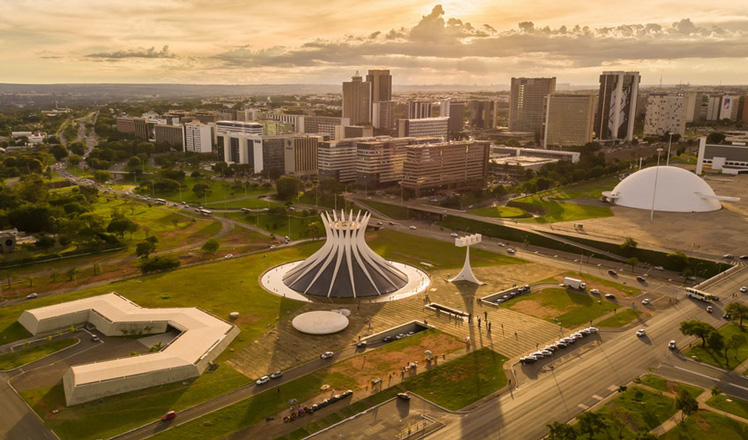
November, 20, 2017: Aerial of a cathedral and museum buildings in Brasilia during sunset.©061 Filmes/Shutterstock
When Brasilia was built from scratch in the late 1950s, it represented the very last innovations in urban planning, a rebuke of colonial, favela-filled Rio de Janeiro, and a new era of rational government. Planner Lucio Costa and architect Oscar Niemeyer created a modernist masterpiece filled with unique shapes and forms, from the Catedral Metropolitana and Praça dos Trés Poderes complex to the Museu Nacional, Itamaraty Palace, and Templo da Boa Vontade. Though the city has had its growing pains over the years, Brasilia remains a unique destination for fans of the mid-century modern aesthetic, a chance to see the style writ large not just in home design or fashion but on the grand scale of whole buildings and city blocks now preserved as a Unesco World Heritage Site.
Soak up Brasilia's bold vibe at the B Hotel, located on the Monumental Axis close to many of the city's best features. It's a mid-century modern dream from top to bottom, designed by Isay Weinfeld with sleek lines, wood paneling, a trim rooftop pool and bar that afford sweeping views of the city, and handsome furniture by Jader Almeida, Isay Weinfeld, Sérgio Rodrigues and Zanine Caldas.
Palm Springs, California, US
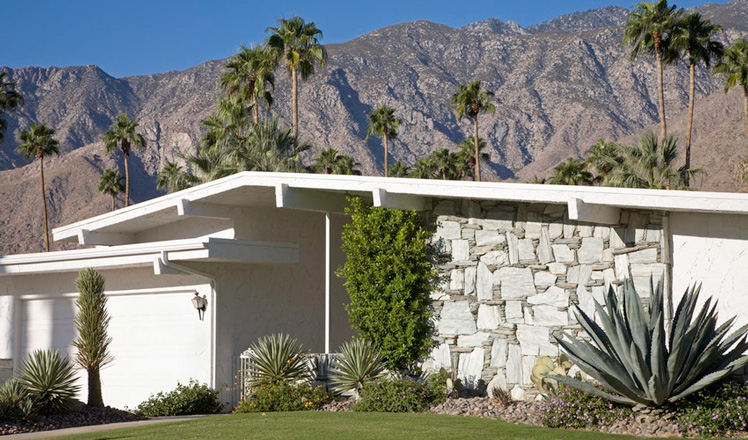
Mid Century Modern Architecture Palm Springs©Solidago/Getty Images
After WWII, Palm Springs flourished thanks to a nearby air force base, popularity with celebrities like Frank Sinatra and Elvis, and cheap land marked with desert forms that inspired a new generation of architects such as Donald Wexler, Richard Neutra, Albert Frey, John Porter Clark, and Lloyd Wright. As the city itself grew, Palm Springs' public buildings and private businesses took on the mid-century aesthetic, too, from local high schools to gas stations, banks, and post offices.
Movie stars had been drawn to Palm Springs for decades by a bountiful crop of resorts and golf courses, and now wanted to build stunning homes of their own in the latest modernist style. You can see the results for yourself at destinations like Sunnylands, on guided tours of the best celeb hot spots, or catch a bird's eye view on the Aerial Tramway.
The result is a city that still looks like Don Draper or Marlon Brando might drive by at any moment, with no shortage of hotels and vacation rentals for visitors eager to bask in Palm Spring's unique brand of sleek glamour. Stay at private spots like iLikeEich, an Eichler-style home with exposed beams and plenty of period-perfect details down to the furnishings and art on the walls. Or book a room at L'Horizon Resort and Spa, a beautifully restored Palm Springs classic originally designed by architect William F. Cody and frequented by Marilyn Monroe.
Berlin, Germany
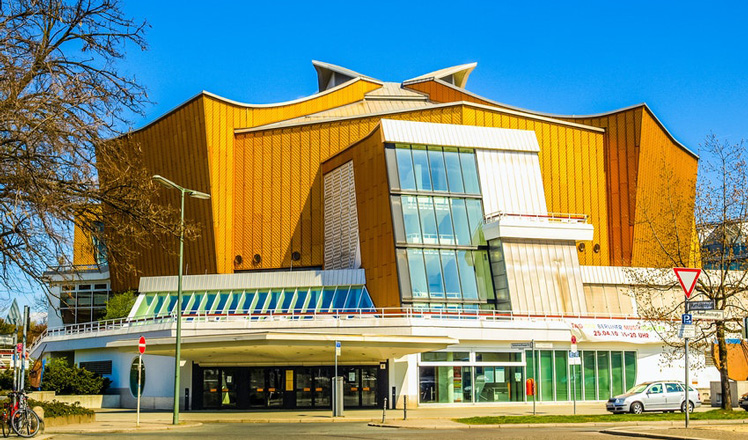
APRIL 23, 2010: Exterior of the Berliner Philarmonie concert hall designed by Hans Scharoun.©Claudio Divizia/Shutterstock
Heavily bombed during WWII and divided by the Berlin Wall in 1961, Germany's capital turned to mid-century architects informed by the very Bauhaus school that was driven abroad by the rise of Nazism in the 1930s. The new structures that rose from the ashes spoke to modernist ideals that contradicted Hitler's preferred neoclassical style.
Because there was such a building boom, Berlin is now the perfect place to enjoy an architecture tour and learn more about the city's story through the bevy of buildings that cropped up in the 1950s and '60s. There are plenty of guided outings to choose from, or you can roll your own itinerary from the city's best examples of modernist design, from pre-war modernist housing estates to the post-war Kulturforum, Berliner Philharmonie, Neue Nationalgalerie, Gropiusstadt, Märkisches Viertel, Unité d'Habitation of Berlin, the Hansaviertel, and the Palais am Funkturm event space (featured in The Queen's Gambit, also full of mid-century cool).
Stay at the Hotel Bristol Berlin, which originally opened in 1952 and has hosted such famous guests as Alfred Hitchcock, Mick Jagger, Sophia Loren, Liza Minnelli, Billy Wilder, and Mikhail Gorbachev. Or stay at the Ostel in the former DDR, flush with retro furniture, an old-style radio and 1970s wallpaper, making you feel like you've been in a time machine.
Yerevan, Armenia
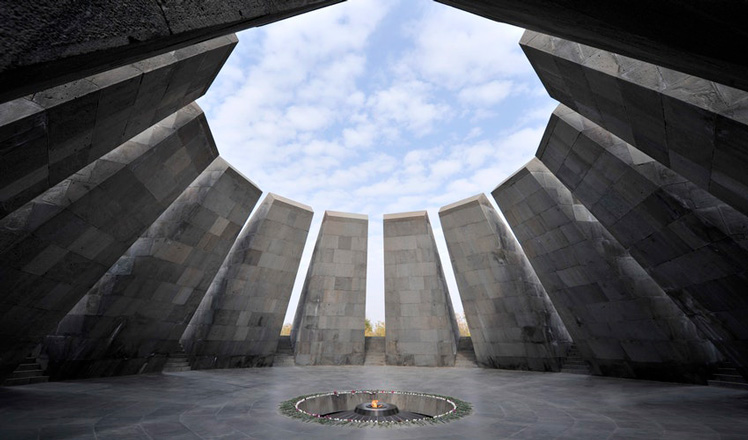
Eternal flame in Tsitsernakaberd memorial©Lampochka/Getty Images
It might seem odd for such an ancient place as Yerevan to be known as a magnet for fans of modernism. But this nearly 3000-year-old city began to undergo radical transformations nearly a century ago when the Soviets took control. As it grew not only in geographic size and population, modernist construction mushroomed. New cultural institutions celebrating the long history of the Armenian people took their architectural cues not from the past, but instead looked to the future.
Today, an architectural tour is still one of the best ways to get oriented in Yerevan, and learn a little about this fascinating, under-rated destination. The city's metro stations, the Armenian Genocide Memorial & Museum, Cardiology Center, Matenadaran library, Cafesjian Center for the Arts, Modern Art Museum of Yerevan, the Moscow Cinema, and Republican Cadastre Building are all fine examples.
All you really have to do to get a glimpse, however, is head to Mashtots – a prominent road through the capital – to see numerous examples of apartments, office buildings, and other modernist structures. Stay at Hrazdan Hotel, a sleek 1970s tower that's nicely appointed in a contemporary-meets-modernist style for an apropos home base. Or rent a private modernist villa a little further out if you want to really soak up a sense of life in Yerevan.
Accra, Ghana
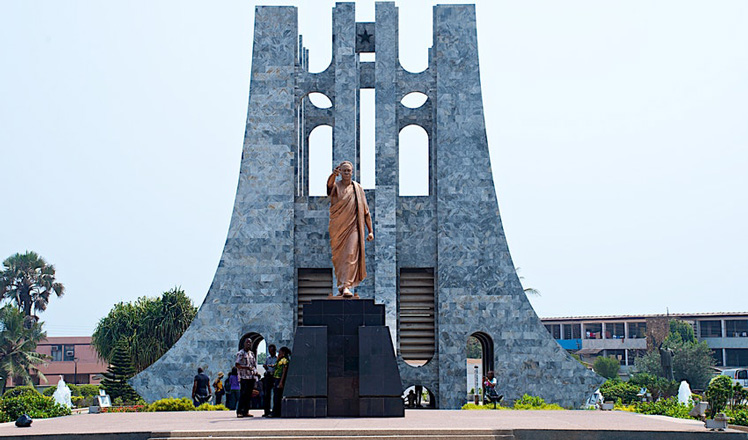
Kwame Nkrumah memorial.©bdinphoenix/Budget Travel
African architecture often gets short shrift, but Ghana is just one of several countries that boast a wealth of modernist structures built on the heels of mid-century independence movements, signifying a move away from colonial aesthetics. Accra in particular has some lovely examples of "Tropical Modernism" – the architectural offshoot that evolved in Ghana as well as Nigeria, Sierra Leone and the Gambia. Independence Square, Kwame Nkrumah Park and Mausoleum, the Goethe-Institut, the National Museum and the Flagstaff House all feature the clean, soaring lines that define post-war modernism, as does the International Trade Fair complex built in 1967.
You can compare and contrast phases of Accra's development with an architecture tour that starts in the city's Old Town district, where the Danish and Dutch made their mark, before ending at the Accra Arena. Afterwards, return to La Villa Ghana, a former Russian embassy turned boutique hotel, with oodles of mid-century charm.
Tokyo, Japan
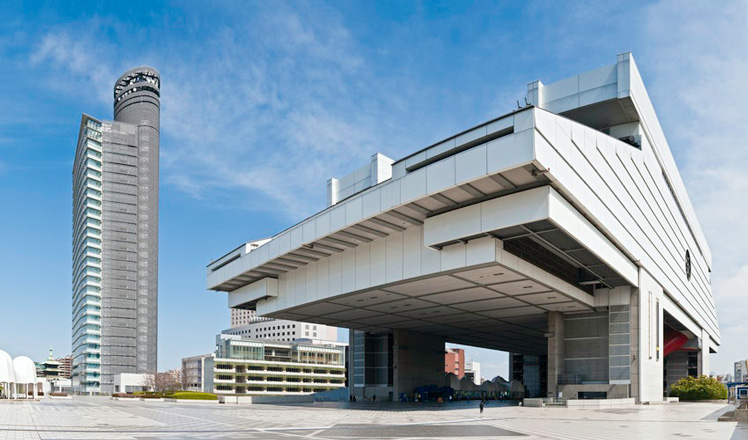
© fotoVyoager / Getty Images
Tokyo has long been associated with futurism – its neon spangled sky scrapers, glittering billboards, and towering radio antennae have inspired sci-fi hits such as Blade Runner. But Tokyo's modernist movement walked so futurist Tokyo could run – starting with iconic structures like Tokyo Tower, the Nakagin Capsule Tower, the Edo-Tokyo Museum, St Mary's Cathedral, the Shizuoka Press and Media Building, Yoyogi National Stadium, the International House of Japan, and the Yasuyo Building. There's even the National Museum of Western Art, designed by the great modernist master Le Corbusier.
You can self-guide your way between these classics, of course, but if a guided tour is more your thing, there are a lot to choose from. There's so much Tokyo architecture worth learning about that tours are often focused on a niche like, say, Harajuku, Omotesando, and Roppongi, or working your way from the Meiji Era to modernism. There's even a whole tour dedicated to Ueno Park, home to modernist structures by Le Corbusier, Kunio Maekawa, Tadao Ando, and Yoshio Taniguchi.
Stay at the legendary Hotel Okura, which was designed by Taniguchi and Hideo Kosaka and opened in 1962. The Okura was featured in the 1966 Cary Grant feature Walk, Don’t Run and the 1967 James Bond flick You Only Live Twice. Despite its reputation for mid-century glam, the original Okura was torn down ahead of the 2020 Olympics (which were postponed due to the COVID-19 pandemic), partly to expand and partly to meet earthquake standards. But Taniguchi’s son picked up where his father left off, faithfully recreating the beloved lobby down to the last detail. The Orchid Bar, another beloved public space at the Okura, was also recreated as part of the rebuild.
Phoenix, Arizona, US
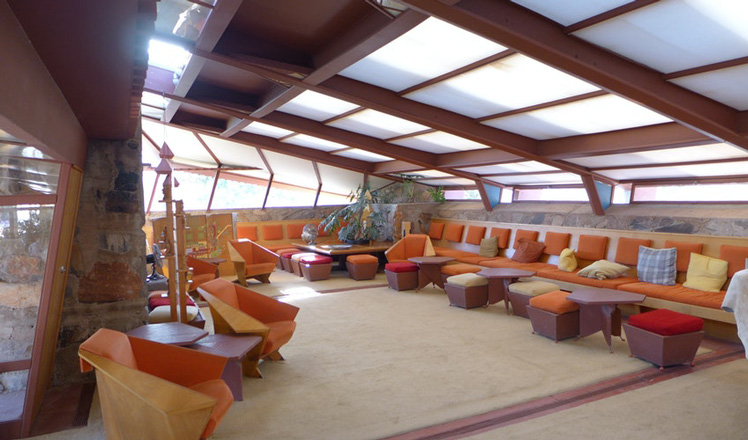
The interior of Frank Lloyd Wright's Taliesin West in Scottsdale, Arizona© Jim Steinfeldt / Getty Images
Like Palm Springs and many other cities in the United States' sun belt, Phoenix really started to blossom in the age of the automobile. With the advent of cheap air conditioning, a post-war tech boom, and plenty of room to grow, Phoenix rapidly expanded just as mid-century modern hit its stride. Architectural greats like Frank Lloyd Wright, Paolo Soleri, and Edward Varney were inspired by the desert landscape, too, spawning a niche style all its own called Desert Modernism. You can still visit national treasures like Wright's Taliesin West, Arcosanti, and Cosanti in Scottsdale and the greater Phoenix area.
Today, the Valley of the Sun is still a sprawling metroplex of 1950s and '60s ranch houses, and a stroll through neighborhoods like Windsor, Windemere, Marion Estates, and Phoenix Gardens will take you back to the days when future stars like Stevie Nicks were growing up in the Phoenix 'burbs. Be sure to grab brunch at Windsor Restaurant and Bar for rumpus room vibes, and book a room at the Hotel Valley Ho, a star-studded classic that hosted such mid-century stars as Bing Crosby, Natalie Wood and Janet Leigh, and has kept its time capsule style intact.
Barcelona, Spain
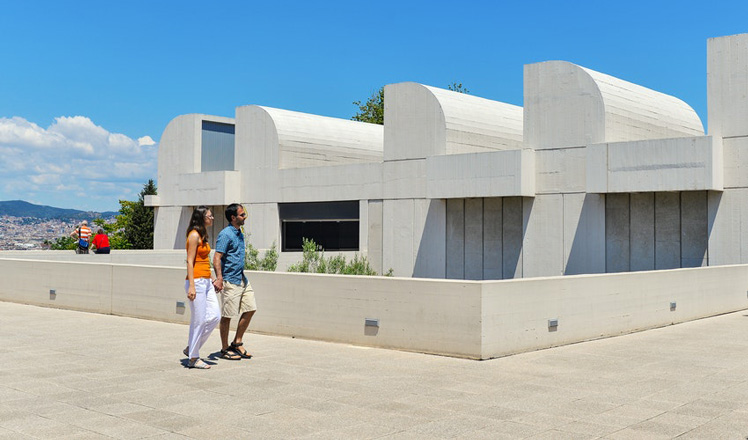
BARCELONA, SPAIN - JUNE1, 2014: Tourists walking in the terrace of Joan Miro Foundation. A museum of modern art honoring Joan Miro located on the hill called Montjuic. Architect: Josep Lluis Sert.©pio3/Shutterstock
Barcelona got a jump on modernism before the aesthetic gelled elsewhere, in part thanks to the Catalan nationalist movement, which spurred art, literature, and architecture in bold new directions. While Modernista marvels like La Sagrada Família, La Pedrera, Casa Amatller, Palau de la Música Catalana, and Casa Batlló might not look like they have much in common with the more streamlined, less ornamental post-war modernism that evolved out of Bauhaus and art deco, you can see glimpses of what's to come in these late 19th-century structures. As in Brasilia's unique layout, you can even see the influence of Catalan Modernism on urban planning in the unusual configuration of Barcelona's streets.
There are plenty of tours to acquaint you with everything from Gaudi's oeuvre to guided strolls through the Poble Espanyol – a museum dedicated entirely to Spanish architecture. Once you're ready to rest your feet, post up at Roca Rooms & Apartments, a well-located spot with retro-cool decor that evokes 1970s Barcelona.
Sydney, Australia
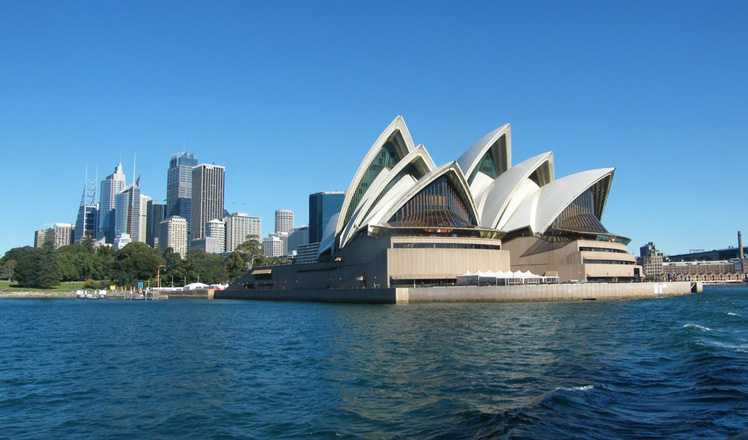
Sydney Opera House©pirkko26/Budget Travel
After WWII, Australia was as inspired by international modernism as any other country, and in particular by the work of Frank Lloyd Wright, to integrate architecture into natural landscapes in innovative new ways. Australia slowly developed its own take on the modernist aesthetic from private homes to iconic masterpieces like the Sydney Opera House. There's a lot more to see in Sydney than its most famous structure, however.
Go for a stroll through the Macquarie University Campus or past the Town Hall House, for example, to see striking examples of Australian brutalism. The Commercial Travellers Association Club building, the Sydney Masonic Centre, and the Sydney County Council Building, all in the Central Business District, have recently been under consideration for protection as historic examples of great architecture. The Sirius building was recently saved from demolition by an outpouring of public support, too, and can still be seen in the Rocks District.
Architecture bike tours help fans of modernism cover a lot of ground, both figurative and metaphoric, as do some extensive walking tours that take the better part of the day but give you a glimpse of everything from aboriginal sacred sites to the Museum of Sydney. Cap the day off at the Primus Hotel, a modernist classic that used to be the headquarters of the Sydney Metropolitan Water Board. The lobby was carefully preserved when the building was converted to a luxe hotel, and the mid-century modern furnishings complete the effect – plus it's got a rooftop garden and pool, and is close to numerous attractions.
Mexico City, Mexico
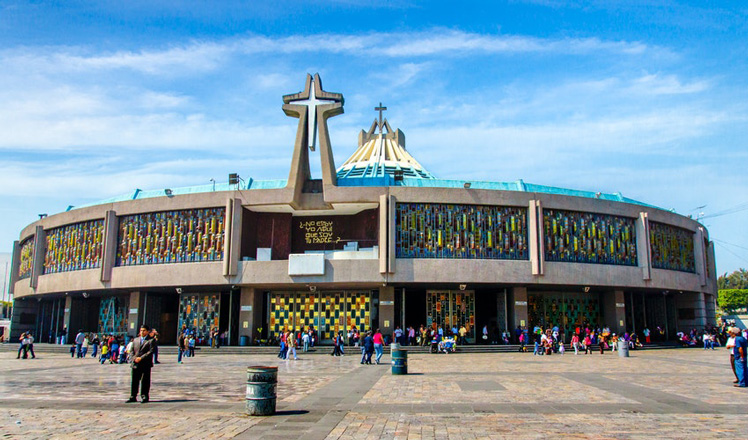
Exterior of the Basilica de Nuestra de Señora Guadalupe (Our Lady of Guadalupe) and Plaza de las Americas.©ElOjoTorpe/Getty Images
In his memoirs, Chilean poet Pablo Neruda wrote of traveling to Mexico City in 1940, a place he described as "the touchstone of America." Over the next two decades, the city's population would swell by millions. Artists like Diego Rivera and Frida Kahlo, whose work was steeped in Mexican culture, were revered around the world. And Mexico City's ancient Aztec monuments and colonial-era architecture were joined by a slew of modernist structures that spoke to the capital's growth and influence.
From the homes of prominent artists and architects like the Museo Casa Estudio Diego Rivera y Frida Kahlo, Casa Luis Barragán, Casa O'Gorman, and Casa Pedregal to institutions like the campus of UNAM (National Autonomous University of Mexico), the Plaza de las Tres Culturas, Archivo Diseño y Arquitectura, Museo Tamayo, and Museo Nacional de Antropología, there's no shortage of modernist wonders to check out. If you're short on time, certainly don't miss the Basílica de Guadalupe – built in the 1970s, the sweeping circular design lined with wood and flooded with light is an architectural triumph.
You can take a Mexico City architecture tour, of course, but be sure to complete the experience with a stay and a meal at Los Manantiales, an affordable inn and restaurant with a beautiful paraboloid design by architect Félix Candela, sometimes compared to a flower. Or book a room at the Camino Real Polanco Mexico, a purple-carpeted mid-century modern spot beloved for its colorful flourishes – can you say "groovy, baby?"
You can book the mentioned destinations at TripFalcon.com App.

